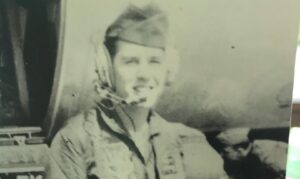A few years ago, I was saddened to hear from my niece, Nicole, that her children were not learning to write cursive because it had been abandoned in school curriculum.
It felt like a stab to my heart that something so civilized and beautiful was being discarded. Of course, many young people already disregard thank you notes but if you’re gonna write a thank you, it needs to be in the swirling design of cursive.
It’s an interesting fact that I and both of my sisters always had pretty handwriting. Each was distinctive and different with mine being the most elaborate and harder to read than their neat, perfect scripts.
I worried over this lack of education every time it came to mind because people had commented about my handwritten notes over the years. I used to send notes to Tink’s father, written by hand, that always began, “Dear Grant Tinker.” It had become our joke that I called him always by both of his names.
One day he called. “I received your note and I appreciate it very much. This is some kind of handwriting,” he said. “It looks like an artist. Your notes are a work of art.”
“Are they hard to read?” I asked. My swirls on t’s, m’s, n’s, f’s, etc. tend to run into the lines above or below them.
He paused a second. He was always kind and considerate to me though with others he could be extremely direct. He was in his late eighties and I suspected that it was much harder to read.
“Perhaps, a little, yes. But they’re really impressive looking even if I can’t read them well.” He added. “I’m old. It’s harder to see these days.”
From that moment forward, I typed his notes in larger font and always began with, “Dear Grant Tinker.” In those notes, I would tell him a story of the Rondarosa and catch him up on any of our new projects. Every time I spoke to him after he had received one of my notes, he told me how he appreciated and enjoyed them.
I write a lot of notes and they are always sent in my handwriting. It adds a special layer of warmth to them. Every handwritten card or note I have ever received, I still have. Boxes of them. I find it impossible to throw out the scripted messages that someone has spent time to compose for me.
Fortunately, the academic powers that be – at least in 14 states – have commanded that cursive return to the curriculum. Hooray for good sense that will keep us on the road to a semblance of good manners. Many of those states are Southern, including Georgia, Tennessee, Arkansas and Louisiana, but they are joined by California and New York City schools.
While Southern folks probably thought the loss of cursive was a serious pin in the balloon of Southern sensibilities, other folks had another point of view: If students failed to learn cursive then they would be unable eventually to read handwritten historical documents such as letters written between families during wars that occurred before the 21st century, ancient diaries and even the Declaration of Independence.
It’s logical. As I have written before, we have a big box full of diaries written by Tink’s great, great grandfather, Charlie Tinker, who worked in President Lincoln’s White House. His script is beautiful and neat as it was for people who lived in the 1860s. Had we not known cursive, we would have been lost to a world of family and American history. Too, they discovered that it was a problem when young people couldn’t sign their names. They printed them. Printing makes it easier for forgers.
These days, when we hear something is being lost like home phones (we still use ours) and clothes lines, they are pretty much gone forever. This news, though, lifts my soul.
Perhaps I’ll send handwritten notes to some lawmakers.
[Ronda Rich is the best-selling author of the new book, “Mark My Words: A Memoir of Mama.” Visit www.rondarich.com to sign for her free weekly newsletter.]









Leave a Comment
You must be logged in to post a comment.